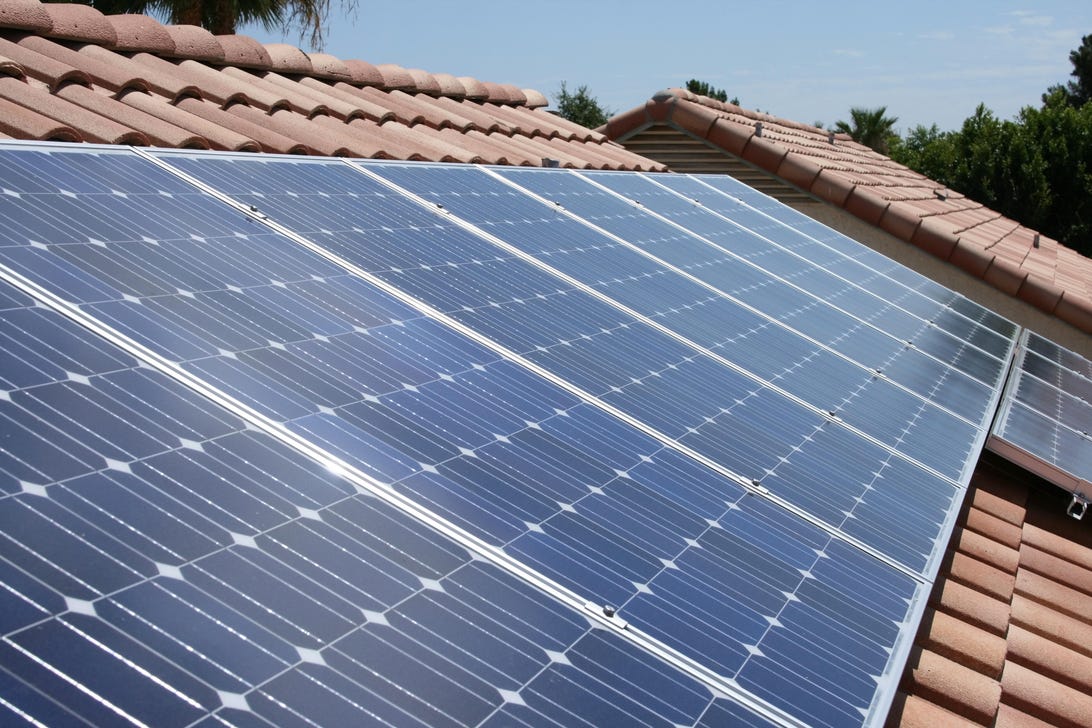
For sun panels to make monetary sense, they wish to save more cash than they value. The native value of electrical energy and sun installations, the quantity of to be had solar, monetary incentives and non-public power intake all have a spot at the stability sheet. Whilst other folks undertake solar energy era for extra causes than saving cash, this can be a giant one.
Householders within the mountain west have a number of issues going for them in making solar energy price it. A lot of solar and cheaper-than-average sun set up prices make solar energy a ravishing possibility. Inexpensive-than-average electrical energy may grasp some again. Realizing if sun will repay calls for a bit of of uncooked records.
Learn CNET’s protection of different areas’ sun doable: New England, the East Coast, the Midwest, the South and the West Coast.
The price of electrical energy
We are defining the Mountain West as Arizona, Colorado, Idaho, Montana, Nevada, New Mexico, Utah and Wyoming, in keeping with how the United States Power Knowledge Management lists electrical energy costs. In keeping with the EIA, Idaho has the second one lowest common electrical energy value (9.95 cents in line with kilowatt-hour) within the country, 2d handiest to its West Coast neighbor, Washington. Just about the entire different Mountain West states are within the backside part of common costs: Arizona (12.27 cents in line with kWh), Colorado (12.36 cents in line with kWh), Montana (11.24 cents in line with kWh), Nevada (11.34 cents in line with kWh), New Mexico (12.94 cents in line with kWh), Utah (10.44 cents in line with kWh) and Wyoming (11.11 cents in line with kWh).
The average monthly bill for these states, which takes into account electricity usage and cost, ranges from $80.24 in Utah to $136.70 in Arizona. The other states — Colorado, $87.88; Idaho, $95.04; Montana, $96.49; Nevada, $110.36; New Mexico, $86.66; and Wyoming, $96.59 — fall in between. In general, monthly bills are less here than other places in the US.
The cost of solar panels
Solar panel prices are most commonly measured in dollars per watt, a standard unit of measurement that can be used to compare solar prices in two different places.
Solar prices vary geographically, in part, because the costs of labor and permitting do too. While the prices of solar panels and necessary hardware have fallen in recent years, the costs associated with labor and sales haven’t fallen as fast.
The national average cost for a solar panel installation is $3.28 per watt, according to the energy analysts at Wood Mackenzie. EnergySage, an online solar market place, provides state-by-state average costs. Since both organizations get their pricing data from different sources, their averages can’t be compared one-to-one.
The average in Arizona is $2.33 per watt (one of the lowest in the country), while next door in New Mexico the average is $3.21 per watt. Colorado ($3.13), Idaho ($2.55), Montana ($3.03), Nevada ($2.44) and Utah ($2.63) round out the region. Arizona, Idaho, Nevada and Utah are four of the cheapest six states for solar, according to EnergySage. Meanwhile, the other three are in the most expensive third.
Read more: US Residential Solar Pricing Needs a Major Overhaul Now
Another local difference that affects solar panel prices is the incentives available. Every solar installation in the United States is eligible for the federal tax credit of 26% of the cost of the system. But states, cities and utilities often have additional incentives on top of that.
While some states have next to nothing in terms of incentives, in others you could save a significant chunk of change. Many states have exemptions for property tax (Arizona, Montana and New Mexico) and sales tax (Arizona, Colorado and New Mexico). Others offer rebates or personal tax credits. Installing solar can earn you up to $1,000 back on your taxes in Arizona and Montana. In Idaho you can deduct up to $20,000 of solar cost from your personal taxes. Rebates for solar systems from states and utilities range from 5 cents for each watt of solar capacity installed in Colorado.
You can explore all incentives in your state by searching the Database of State Incentives for Renewables and Efficiency.
The solar potential of the Mountain West
Solar potential is a term that can mean a few different things, but no matter how you cut it, certain parts of the region have lots of it.
Arizona, Colorado, Nevada, New Mexico and Utah rank in the top 11 for solar installations per capita. Montana had the lowest ranking of the group at 30th.

States like Colorado and Arizona get a lot of sun, perfect for solar panels.
JennaWagner/Getty Images
One way to measure solar potential is to measure how much electricity a horizontally mounted square meter of solar panels would generate on an average day. These states have the highest rating of any region in the United States. According to the National Renewable Energy Lab, most of this region would produce over 5 kilowatt-hours a day (PDF), and much of it would produce over seven kWh.
Read more: Should You Invest in Solar Panels in 2022? It’s Complicated
Another way to gauge the solar potential of a state is to identify how much of an average electric bill the average rooftop solar installation could replace. The same NREL report says that the average rooftop solar array could replace 60% to 70% of the average utility bill in Montana, 70% to 80% percent in Idaho and Utah, 80% to 90% percent in Arizona and Wyoming, 90% to 100% percent in Nevada and over 100% percent in Colorado and New Mexico. On the whole, these states have a higher-than-average utility bill offset.
The numbers in this article are statewide averages and may not be what an individual homeowner would find. Their utility bill might be higher than average and local cost of solar installation lower. The opposite might be true. As with any large purchase, buying solar panels requires individual research. That should include getting multiple quotes from local installers and confirming the incentives available to you.
From this bird’s-eye view, it’s apparent that the Mountain West has high solar potential. Average electricity costs are lower than normal, but so are solar costs. At the same time, solar panels can produce more electricity here than anywhere else in the US. Solar power is at least worth a close look in these states.

